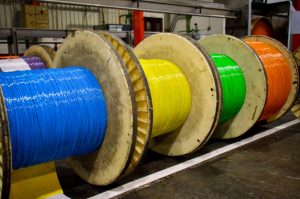The broadband industry is at a crossroads. Fiber-optic technology and 5G wireless are revolutionizing connectivity, raising questions about the long-term viability of cable broadband. With each new advancement, the stakes grow higher for cable providers striving to remain relevant in an evolving market.
Fiber and 5G: A Formidable Duo
Fiber-optic networks have become synonymous with high-speed, reliable internet. Fiber is rapidly becoming the backbone of modern connectivity, offering multi-gigabit speeds and unmatched scalability. According to the Fiber Broadband Association, over 60 million U.S. households now have access to fiber, a number projected to grow significantly in the coming years.
Meanwhile, 5G technology is reshaping the wireless landscape. Its low latency and capacity to support massive device connectivity make it ideal for emerging applications such as smart cities and autonomous vehicles. Companies like Verizon and AT&T have aggressively expanded their 5G networks, claiming it as a viable alternative to traditional broadband in urban and suburban areas.
“Fiber and 5G are complementary technologies that create a powerful ecosystem. However, this also pressures cable providers to innovate or risk obsolescence,” said Shirley Bloomfield, CEO of NTCA—The Rural Broadband Association.
The Cable Broadband Response
Cable broadband continues to evolve through technological innovation, particularly with DOCSIS 4.0 (Data Over Cable Service Interface Specification). This latest iteration enables symmetrical multi-gigabit speeds, with downstream capabilities reaching 10 Gbps and upstream speeds of up to 6 Gbps. The technology achieves this through improvements in signal modulation, spectrum allocation, and advanced error correction.
The key advantage of DOCSIS 4.0 lies in its compatibility with existing HFC infrastructure. Cable operators can upgrade their networks incrementally by replacing end-point equipment and making targeted node improvements rather than undertaking costly fiber-to-the-home (FTTH) deployments. This approach typically reduces implementation costs by 50-75% compared to full fiber buildouts. Beyond raw speed improvements, DOCSIS 4.0 introduces enhanced features like lower latency DOCSIS (LLD) and improved queue management, resulting in sub-millisecond latency levels that support demanding applications like cloud gaming and virtual reality. The specification also includes advanced network management capabilities, allowing operators to optimize performance dynamically based on user demand and network conditions.
These advancements position cable broadband as a viable long-term competitor to fiber networks, particularly in markets where FTTH deployment costs remain prohibitive. Major operators like Comcast and Charter are already conducting DOCSIS 4.0 field trials, with widespread commercial deployment expected to begin by 2025.
Affordability and Accessibility
Cost remains a significant factor in broadband deployment. Fiber and 5G projects often require substantial capital investments, making them less feasible in rural and underserved areas. With its established infrastructure, Cable continues to provide an affordable and reliable alternative in these regions. Deloitte’s analysis highlights hybrid approaches combining cable, fiber, and wireless technologies as the most practical way to achieve universal broadband coverage.
Consumer Preferences
For consumers, choosing between fiber, 5G, and cable often boils down to availability, price, and specific needs. While fiber excels in speed and reliability and 5G offers mobility, cable still commands a significant market share due to its widespread availability and bundled service options.
What is the Future Outlook
Fiber and 5G proliferation is reshaping the broadband industry, but cable broadband is unlikely to disappear. Instead, it is expected to evolve as a complementary technology in a diverse connectivity ecosystem. Advances in cable technology, its cost-effectiveness, and existing infrastructure ensure it will remain relevant, particularly in areas where fiber and 5G face deployment challenges. As the broadband landscape becomes increasingly competitive, the role of cable broadband is being redefined. While fiber and 5G dominate the headlines, cable’s ability to adapt and innovate remains a critical part of the conversation. The future of broadband will likely be a blend of technologies, each contributing to a more connected world.



